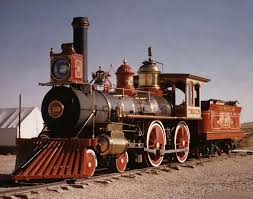Stamp: Locomotive in front of San Miguel volcano (El Salvador 1891)
Locomotive in front of San Miguel volcano (El Salvador 1891)
01 January (El Salvador ) within release Locomotive in front of San Miguel volcano goes into circulation Stamp Locomotive in front of San Miguel volcano face value 1 Salvadoran peso
| Stamp Locomotive in front of San Miguel volcano in catalogues | |
|---|---|
| Michel: | Mi: SV 45 |
| Stamp Number: | Sn: SV 56 |
| Yvert et Tellier: | Yt: SV 45 |
| Stanley Gibbons: | Sg: SV 48 |
Stamp is square format.
Also in the issue Locomotive in front of San Miguel volcano:
- Stamp - Locomotive in front of San Miguel volcano face value 1;
- Stamp - Locomotive and volcano face value 10;
- Stamp - Locomotive and volcan face value 2;
- Stamp - Locomotive, Mt. Miguel face value 11;
- Stamp - Locomotive in front of San Miguel volcano face value 50;
- Stamp - Locomotive in front of San Miguel volcano face value 1;
- Stamp - Locomotive in front of San Miguel volcano face value 20;
- Stamp - Locomotive in front of San Miguel volcano face value 25;
Stamp Locomotive in front of San Miguel volcano it reflects the thematic directions:
A locomotive is a rail transport vehicle that provides the motive power for a train. If a locomotive is capable of carrying a payload, it is usually rather referred to as a multiple unit, motor coach, railcar or power car; the use of these self-propelled vehicles is increasingly common for passenger trains, but rare for freight trains.
The Arecaceae is a family of perennial, flowering plants in the monocot order Arecales. Their growth form can be climbers, shrubs, tree-like and stemless plants, all commonly known as palms. Those having a tree-like form are called palm trees. Currently, 181 genera with around 2,600 species are known,
most of which are restricted to tropical and subtropical climates. Most palms are distinguished by their large, compound, evergreen leaves, known as fronds, arranged at the top of an unbranched stem, except for the Hyphaene genus, who has branched palms. However, palms exhibit an enormous diversity in physical characteristics and inhabit nearly every type of habitat within their range, from rainforests to deserts.
A modern sailing ship or sailship is any large wind-powered vessel. Traditionally a sailing ship (or simply ship) is a sailing vessel that carries three or more masts with square sails on each. Large sailing vessels that are not ship-rigged may be more precisely referred to by their sail rig, such as schooner, barque (also spelled "bark"), brig, barkentine, brigantine or sloop. There are many different types of sailing ships, but they all have certain basic things in common. Every sailing ship has a hull, rigging and at least one mast to hold up the sails that use the wind to power the ship. The crew who sail a ship are called sailors or hands. They take turns to take the watch, the active managers of the ship and her performance for a period. Watches are traditionally four hours long. Some sailing ships use traditional ship's bells to tell the time and regulate the watch system, with the bell being rung once for every half hour into the watch and rung eight times at watch end (a four-hour watch). Ocean journeys by sailing ship can take many months, and a common hazard is becoming becalmed because of lack of wind, or being blown off course by severe storms or winds that do not allow progress in the desired direction. A severe storm could lead to shipwreck, and the loss of all hands. Sailing ships are limited in their maximum size compared to ships with heat engines, so economies of scale are also limited. The heaviest sailing ships (limited to those vessels for which sails were the primary means of propulsion) never exceeded 14,000 tons displacement. Sailing ships are therefore also very limited in the supply capacity of their holds, so they have to plan long voyages carefully to include many stops to take on provisions and, in the days before watermakers, fresh water.
A volcano is a rupture in the crust of a planetary-mass object, such as Earth, that allows hot lava, volcanic ash, and gases to escape from a magma chamber below the surface. The process that forms volcanoes is called volcanism.




